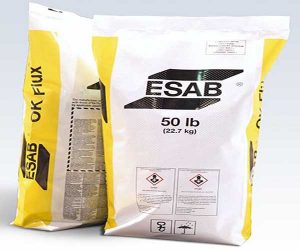Welding Fluxes
WeldingFluxes are made of granulized inorganic or metal materials playing the roles such as conductivity of arc length, formation of slag coatings and melt deoxygenation in the submerged welding. They also play the role of electrode cover in the manual process. The physical appearance of the welding flux is dependent to the elements present within the material. In addition, the size and dimensions of the fluxes are very important. There is no general welding flux that can be used for every metals and gaps, and thus, the selection of the welding flux must be done according to the application. The maximum ampere consumption is achieved during the application of welding flux in the process. Welding fluxes are found in three types: acidic, neutral and basic. Another classification is two types of pre-melt and agglomerated welding fluxes. Pre-melt welding fluxes are obtained through melting of grinded raw materials. The melted product is then cooled, grinded and screened in order to achieve desired dimensions. The strength and density of these pellets are high and this prevents their pulverization during handling and storage. Pre-melted welding fluxes are resistant against oxygen and hydrogen diffusion and hydrogen cracking and subsequently can be used for open areas, unroofed structures and humid environments.




